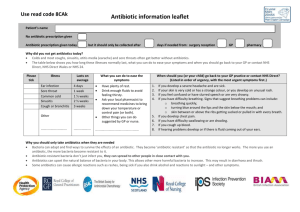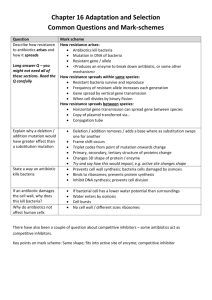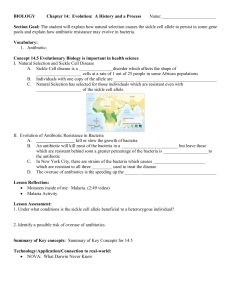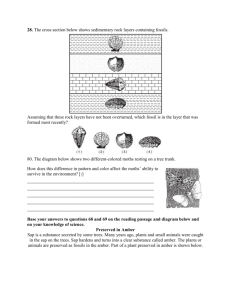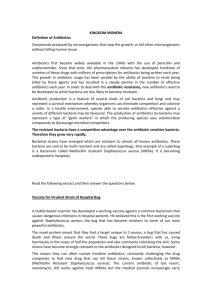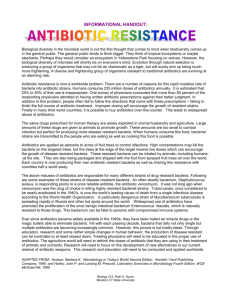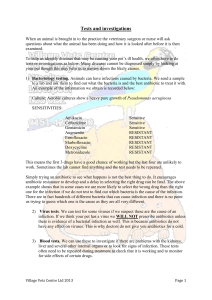The fight against drug resistant bacteria
advertisement
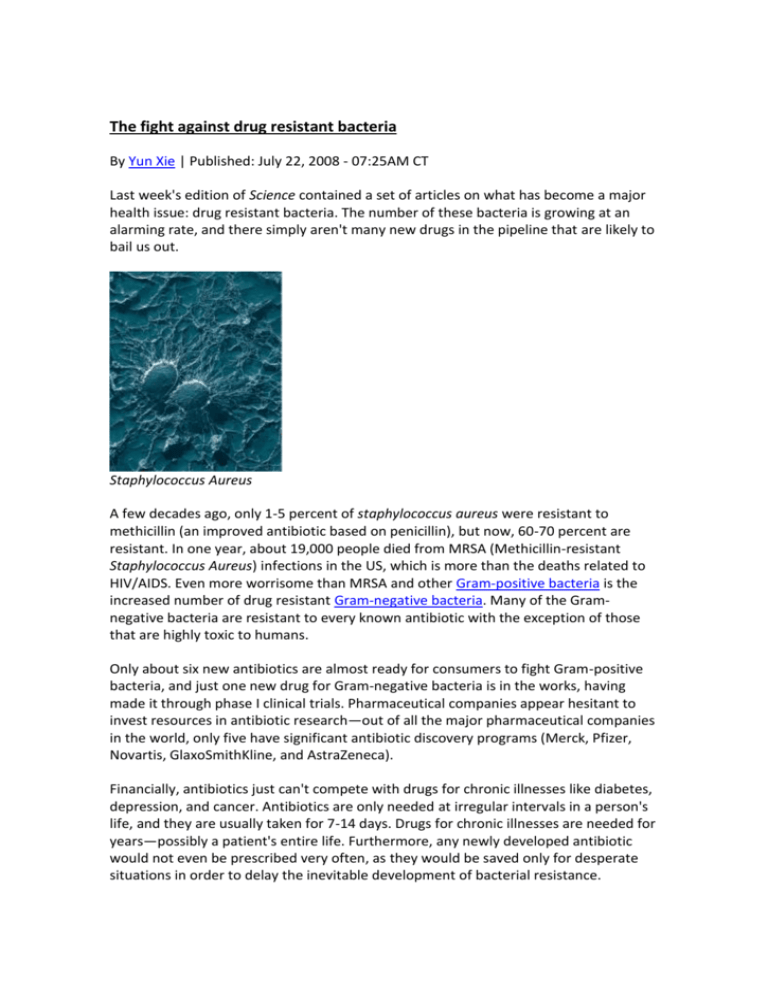
The fight against drug resistant bacteria By Yun Xie | Published: July 22, 2008 - 07:25AM CT Last week's edition of Science contained a set of articles on what has become a major health issue: drug resistant bacteria. The number of these bacteria is growing at an alarming rate, and there simply aren't many new drugs in the pipeline that are likely to bail us out. Staphylococcus Aureus A few decades ago, only 1-5 percent of staphylococcus aureus were resistant to methicillin (an improved antibiotic based on penicillin), but now, 60-70 percent are resistant. In one year, about 19,000 people died from MRSA (Methicillin-resistant Staphylococcus Aureus) infections in the US, which is more than the deaths related to HIV/AIDS. Even more worrisome than MRSA and other Gram-positive bacteria is the increased number of drug resistant Gram-negative bacteria. Many of the Gramnegative bacteria are resistant to every known antibiotic with the exception of those that are highly toxic to humans. Only about six new antibiotics are almost ready for consumers to fight Gram-positive bacteria, and just one new drug for Gram-negative bacteria is in the works, having made it through phase I clinical trials. Pharmaceutical companies appear hesitant to invest resources in antibiotic research—out of all the major pharmaceutical companies in the world, only five have significant antibiotic discovery programs (Merck, Pfizer, Novartis, GlaxoSmithKline, and AstraZeneca). Financially, antibiotics just can't compete with drugs for chronic illnesses like diabetes, depression, and cancer. Antibiotics are only needed at irregular intervals in a person's life, and they are usually taken for 7-14 days. Drugs for chronic illnesses are needed for years—possibly a patient's entire life. Furthermore, any newly developed antibiotic would not even be prescribed very often, as they would be saved only for desperate situations in order to delay the inevitable development of bacterial resistance. Along with pharmaceutical companies, the medical profession has largely been unhelpful. Many doctors are prescribing antibiotics incorrectly and unnecessarily. For example, nearly 55 percent of the antibiotics prescribed for upper respiratory infections were pointless. Doctors also tend to prescribe broad-spectrum antibiotics when a single narrow-spectrum antibiotic would treat the patient. Finally, there is a lack of understanding regarding the required length of time for taking antibiotics. There is a standard practice of telling patients to take antibiotics for seven to 21 days, depending on the infection. However, recent research shows that this is excessive; in most cases, urinary tract infections can be treated in one to three days, not seven days or more. We're in need of some detailed studies that will determine the effective time course for all antibiotics, because excessive antibiotic use will make drug resistance worse. The public, medical professionals and pharmaceutical companies must become more aware of growing bacterial resistance to drugs. Bacteria like MRSA is not just confined to hospitals anymore—they are showing up in the community. To prevent a possible outbreak, we should encourage funding for antibiotic research and conscientious antibiotic use. Science, 2008. DOIs: 10.1126/science.321.5887.356 and 10.1126/science.321.5887.360



